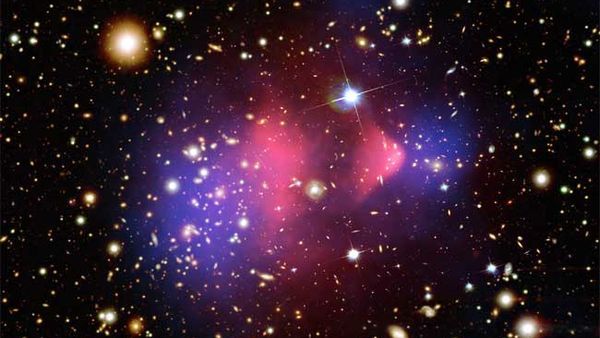The Potential for Life Could Have Emerged Moments Following the Big Bang.
Life could potentially predate Earth by a considerable span.
Life has established a residence on Earth for approximately 4 billion years, a substantial portion of the universe’s 13.77 billion-year history. The possibility exists that life could have emerged elsewhere if it originated here. Considering the challenge of defining life, with over 200 published definitions, it becomes apparent that the concept is complex. Questions arise about the status of viruses and prions in debates over the distinction between life and nonlife. For our exploration of life’s origins, we adopt a broad yet practical definition: life encompasses everything subject to Darwinian evolution.

This definition proves useful as we delve into the origins of life itself, blurring the lines between life and nonlife. Earth underwent a transition from nonliving to living, stretching the limits of any definition. As we venture into the past and examine potential alternatives for life, maintaining a broad definition becomes crucial, especially when exploring the universe’s extreme and exotic corners.
According to this definition, life on Earth emerged at least 3.7 billion years ago. Microscopic organisms had evolved to a point where they left lasting traces of their activities. Similar to modern organisms, they utilized DNA for information storage, RNA for transcription, and proteins for interaction with the environment, enabling Darwinian evolution.
However, these microbes did not spontaneously appear but evolved from simpler forms of life. If life encompasses anything that evolves, an even more rudimentary version of life must have existed in Earth’s earlier history. Some theories propose that the first self-replicating molecules, representing the simplest form of life on Earth, could have emerged over 4 billion years ago when the oceans cooled.
Moreover, Earth might not have been the sole contender; Mars and Venus shared similar conditions during that period. Therefore, if life originated on Earth, there is a possibility it may have also occurred on these neighboring planets.
The inaugural existence amidst the celestial bodies.
However, the sun did not initiate fusion as the first star; rather, it is the outcome of a lineage of preceding generations of stars. Life, as we recognize it, depends on several crucial elements: hydrogen, oxygen, carbon, nitrogen, and phosphorus. With the exception of hydrogen, which emerged within the initial minutes after the Big Bang, all these elements are forged within the cores of stars during their life cycles. Thus, as long as there are one or two generations of stars undergoing life cycles, dispersing their elements throughout the broader galaxy, the possibility of Earth-like life emerging in the universe remains.
This extends the timeline for the potential initial emergence of life to well beyond 13 billion years ago. This epoch in the universe’s history is termed the cosmic dawn, marking the formation of the first stars. Although astronomers cannot precisely pinpoint when this transformative era occurred, it likely transpired within a few hundred million years after the Big Bang. As soon as these stars materialized, they could have commenced the production of essential life-sustaining elements.
Consequently, life as we understand it—constructed with carbon chains, utilizing oxygen for energy transport, and immersed in liquid water—might be significantly older than Earth. Even speculative forms of life based on exotic biochemistries necessitate a comparable blend of elements. For instance, some extraterrestrial life forms might rely on silicon instead of carbon as a fundamental building block or use methane instead of water as a solvent. Regardless of the specifics, these essential elements must originate from the cores of stars. Without stars, the existence of chemical-based life becomes implausible.
The first life in the universe
However, the concept of life might extend beyond the realm of chemistry. Envisioning the nature of such entities is challenging, but adhering to our expansive definition—that life is anything subject to evolution—suggests that chemical processes are not essential for its occurrence. While chemistry provides a convenient means for storing information, extracting energy, and interacting with the environment, alternative hypothetical pathways exist.
Consider, for instance, that 95% of the energy content of the universe eludes understanding in physics, residing beyond the boundaries of known elements. The constituents of this mysterious portion of the universe, termed dark matter and dark energy, remain unknown to scientists. It is conceivable that additional forces of nature exclusively affect dark matter and dark energy. The possibility arises of multiple “species” of dark matter, forming an entire “dark matter periodic table.” The interactions and potential “dark chemistry” in the vast expanses between stars remain uncertain. Speculatively, “dark life” could have emerged in the early universe, predating the first stars, driven and influenced by forces yet to be comprehended.
Exploring further into the realm of possibilities, some physicists theorize that in the initial moments of the Big Bang, the forces of nature were so extreme and exotic that they could have supported the development of intricate structures. Cosmic strings, which are folds in space-time anchored by magnetic monopoles, are one such example. With sufficient complexity, these structures could have stored information, abundant energy available for self-replication, thereby facilitating Darwinian evolution.
Creatures existing in such extreme conditions would have experienced a fleeting existence, living and dying in the span of a moment, with their entire history lasting less than a second. Yet, to them, that fleeting moment would have constituted a lifetime.
This article is republished from SpaceCom under a Creative Commons license. Read the original article.
Do not forget to share your opinion with us to provide you with the best posts !



0 Comments